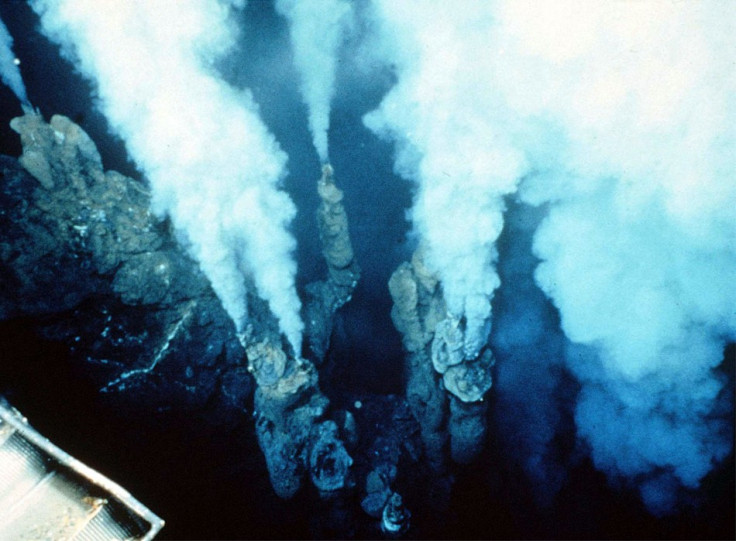Malaysia Airlines Plane MH370: Underwater Volcanoes 'May Mean Wreckage is Never Found'

The search for the missing Malaysian Airlines plane MH370 will be vastly hindered by a chain of active volcanoes under the sea where teams are looking for the wreckage.
Underwater geologist Robin Beaman, from the James Cook University in Australia, said the volcanoes will make the search much more difficult because of the changing landscape beneath the southern Indian Ocean.
"It's very unfortunate if that debris has landed on the active crest area, it will make life more challenging," he told the Sydney Morning Herald.
"It's rugged, it's covered in faults, fine-scale gullies and ridges, there isn't a lot of sediment blanketing that part of the world because it's fresh [in geological terms]."
Beaman said the giant undersea chain of volcanoes has barely been mapped in detail, meaning any attempt to retrieve the aircraft will require extensive 3D mapping and the use of multibeam echo sounders.

This is particularly problematic because Australian experts no longer have the capacity to go beyond depths of three kilometres after the only government vessel capable was decommissioned in December last year.
"It's bad timing really. Australia has no capability of mapping these depths," he said.
"On the flanks of the ridge, which is very likely where any crash zone occurred, there has been virtually no ... mapping apart from the odd strip. It's all going to have to be remapped, there's no doubt."
The last surveys of the area to create a 3D map of the sea floor were conducted 20 years ago, and were only around 10 to 20km wide – making Beaman even less optimistic of finding the plane.
"It'll be very unlikely that debris has fallen in those little 10 to 20-kilometre-wide zones. You're left with gaps of hundreds of kilometres where there is no detailed understanding of what the sea floor terrain looks like."
Australia's prime minister Tony Abbott has said the search will continue until it becomes hopeless: "It is not absolutely open-ended but it is not something we will lightly abandon," he said.
FLIGHT MH370 FACTBOX
Flight MH370 took off from Kuala Lumpur International Airport en route to Beijing at 00:41 on Saturday 8 March (16:41 GMT Friday).
About 50 minutes later, the aircraft lost contact with air traffic control.
No distress call was made.
On board, there were 12 Malaysian crew members and 227 passengers from 14 countries. That included 153 Chinese and 38 Malaysians.
Two Iranian male passengers, Pouria Nour Mohammad Mahread and Delavar Syed Mohammad Reza, were travelling on fake passports. Neither had any apparent links to terrorist groups.
No debris from the plane has been found in the international search.
Last confirmed communication with Indian Ocean satellite occurred at 08:11am, meaning plane continued to fly for seven hours after radar signal was lost.
At least 25 countries, including China, the US and Singapore, have now joined in the search for the missing plane.
© Copyright IBTimes 2025. All rights reserved.






















